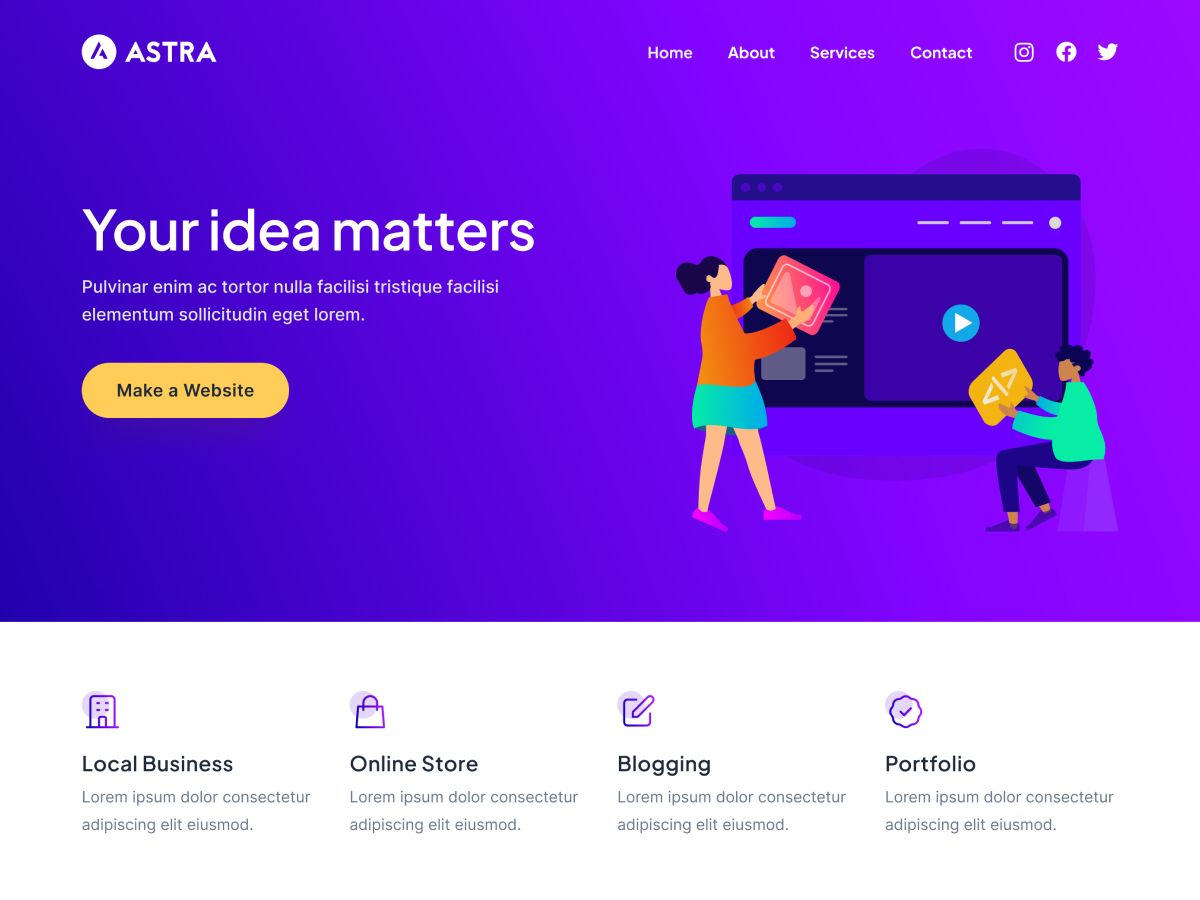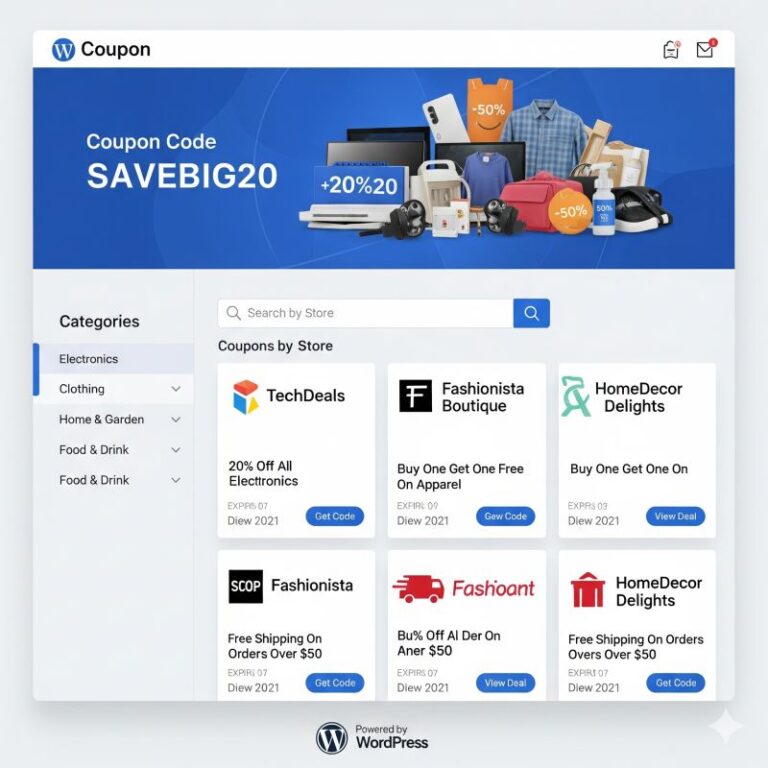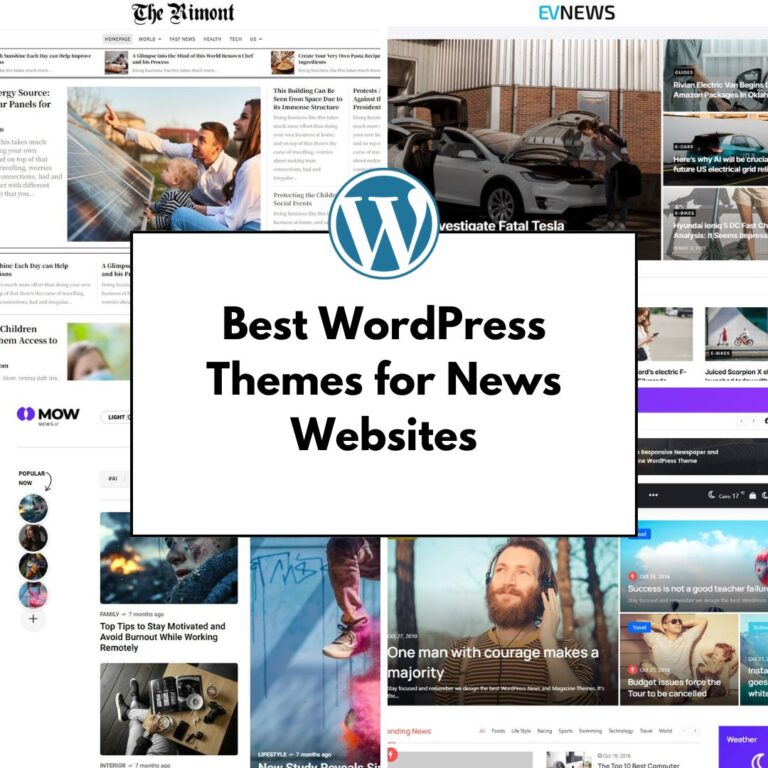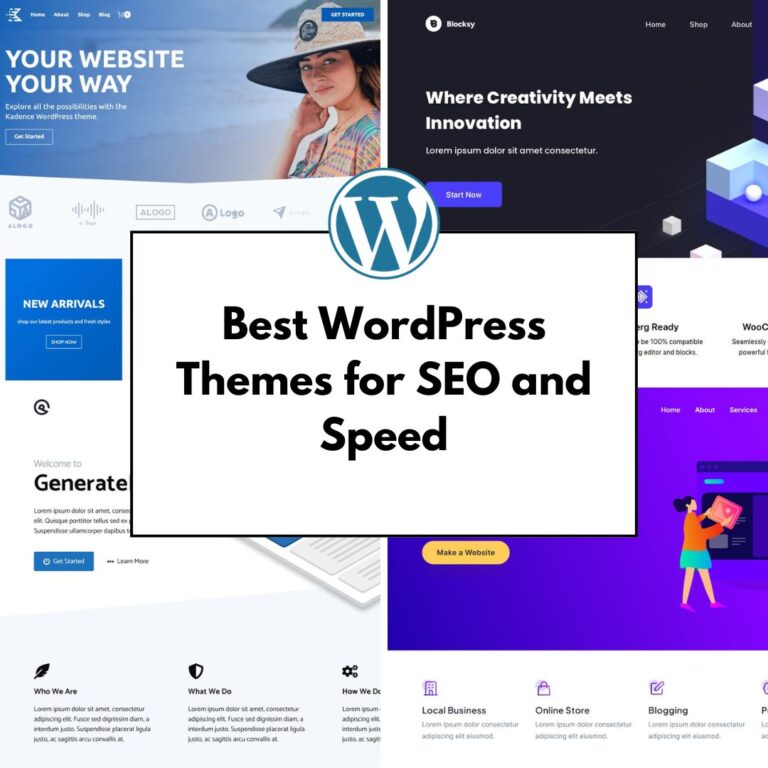I’ve spent some time exploring the world of WordPress themes, and if you’ve done any research yourself, chances are you’ve come across Astra. It’s consistently ranked high, and when you see that over 2 million websites use it, including big names like Stanford University, NASA, and Google, it’s clear there’s something special about it. I often wonder, with such a highly praised free version, why would anyone need to consider the Pro version? Well, I’ve dug into the details, and I want to share my insights to help you decide if Astra is the right theme for your projects and whether upgrading to Astra Pro is worth it.
Avoid using nulled or cracked themes and plugins!
They might seem like a good deal, but in reality, they’re a serious risk. These versions often contain hidden backdoors or malware that can compromise your entire website and hurt SEO rankings.
To stay safe, always download themes and plugins from official sources – like the WordPress repository or the developer’s own website.
If you need premium features, it’s best to support the creators by purchasing the official version. Can’t afford it? No problem – there are plenty of reliable, free alternatives out there that do the job without putting your site at risk.
WordPress, at its core, needs a theme to display content. Think of WordPress as the engine of a car, and the theme as the body and interior that organizes and presents everything. Astra is what’s called a classic theme in the WordPress ecosystem. It’s a mature product, and as I mentioned, the most installed WordPress theme of all time. It provides the general style and layout, and gives you options in the theme customizer to control various parts of your site, like the header, footer, blog post layouts, and overall width. A theme like Astra controls the ‘outside shell’ and specific pages like archive or e-commerce pages, but it doesn’t typically build the pages themselves. For that, you’ll need a page builder.
My goal here is to give you a comprehensive look at Astra, its Pro features, how it fits into the larger WordPress and Brainstorm Force product family (which includes Spectra, Starter Templates, and ZipWP), and ultimately, whether I think it’s the right fit for you.
Key Features
Astra, even in its free version, is quite powerful, offering a lot of tools to build professional-looking websites. But the Pro version significantly expands on this, offering “more of everything,” as I see it described.
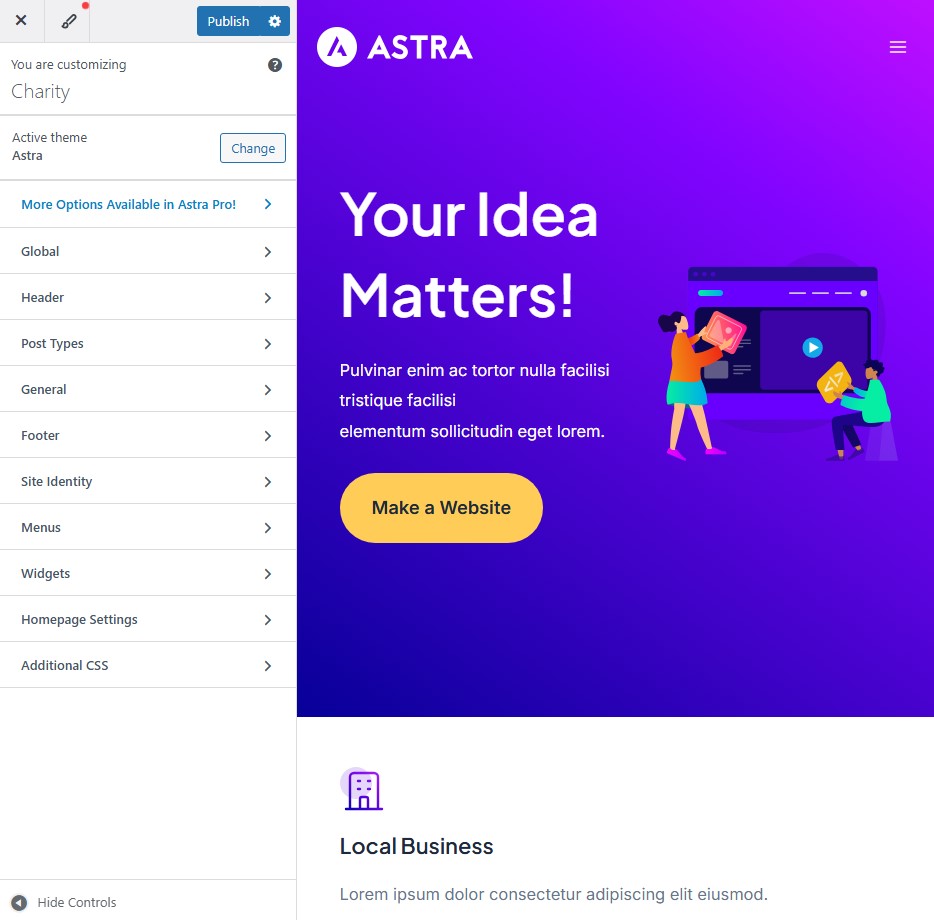
Let’s start with the basics: the Header Builder and Footer Builder. These are awesome even in the free version, allowing you to customize the header and footer of your site using a drag-and-drop interface in the customizer. You can add elements like a logo, navigation menus, and buttons. With Astra Pro, you get “more of everything” for these builders. This includes additional elements not found in the free version, such as a sticky header, a divider element, a language switcher element, and a toggle button element. You also get options to clone and delete elements, increase the element count you can use, and access more design options overall. For instance, the language switcher in Pro allows you to use flags, just the name, or show it horizontally or vertically, none of which is available in the free version. You also get more buttons and widgets to use in these areas in the Pro version.
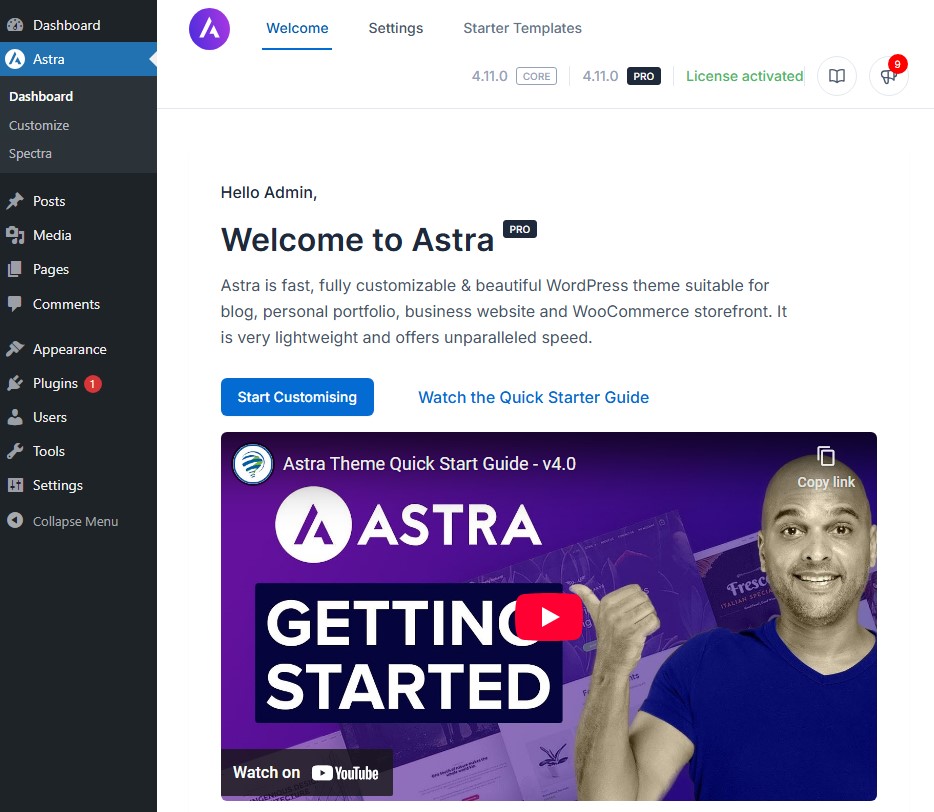
One of the features I find particularly useful in Astra Pro Addon is the sticky header. In the free version, when a user scrolls down the page, the header typically scrolls off-screen. With the sticky header feature in Pro, the header remains visible at the top of the screen as the user scrolls. This is super handy because it keeps important navigation or a call to action always in view, which can be great for conversions. You can even set up a different logo to appear when the header becomes sticky, and you have the option to make the primary header, the above header, and the below header sticky. Activating it is simple through the customizer.
Another exclusive Pro feature related to navigation is the Mega Menu. If you have a lot of content on your website, a standard dropdown menu can become overwhelming. A mega menu allows you to create a large, multi-column dropdown panel to showcase a wide range of links or even display recent blog posts or other content, helping to streamline navigation and prevent users from feeling lost. It’s a great way to organize extensive content effectively. Setting it up involves enabling the option in the Astra dashboard, then configuring it within the Appearance > Menus section in WordPress. You can choose heading texts, add pages or custom links, and arrange them into columns. You can even change the background color or add a gradient.
When it comes to customizing the look and feel of your site beyond the layout, Astra Pro offers significantly more color controls and better typography options. In the free version, while you can change some colors and basic fonts, the Pro version provides a sheer amount of additional options, particularly for e-commerce sites. For a WooCommerce product page, for example, the free version might only let you change basic colors for the ‘sticky add to cart’ button or text. The Pro version unlocks extensive color options for general text, titles, categories, prices, product navigation, and descriptions. Similarly, the free version has limited typography options, especially on specific pages like a single WooCommerce product. The Pro version gives you extensive controls to change fonts, font weights, sizes, and other self-explanatory options for all major text elements on the page, allowing you to make elements like product prices really stand out (though I’d advise subtle changes for better design!).
Site Layouts are another exclusive Pro feature. While the free version offers container and sidebar layouts, Pro introduces options like Max Width, Padded, and Fluid layouts. Max Width allows you to define a maximum width for your content. Padded adds padding around the content area, which can create very modern looks. Fluid is completely elastic, adapting fully to the screen size. These options give you great creative control over how your website’s layout looks, though if you’re using a page builder like Elementor, the page builder’s container settings might override these site layout options.
For bloggers, Astra Pro provides more powerful Blog Layouts options. The free version offers a classic blog layout with basic options like container layout, sidebar layout, content width, post structure, and post content. The Pro version adds features like space between posts, a date box (which can be square or circle), excerpt count control (setting the exact number of characters), customizable ‘Read More’ text, featured image size modification, and enhanced post pagination options including numbers, standard pagination, or infinite scroll (either on click or automatic scroll). These additions really help your blog stand out and can make it feel more modern and professional.
Page Headers are another Pro-exclusive feature that allows you to add a banner image or colored section just below the site header on specific pages. You have a lot of control over where these page headers are displayed (entire website, specific pages, posts, categories, etc.), excluding certain pages (like the homepage), and even limiting visibility based on user roles. A particularly neat option is the ability to merge the site header with the page header, creating a seamless or overlapping effect. While there’s a dedicated video on this, the core idea is adding customizable banners to specific content areas with granular control.
Now, arguably one of the most powerful Pro features is Custom Layouts. This module is essentially a theme builder within Astra Pro. It allows you to create completely custom Headers, Footers, 404 pages, and content sections (Inside Post/Page Content and Hooks).
- Custom Headers and Footers: You can design unique headers and footers for specific pages or sections of your site, overriding the global header and footer. This is incredibly useful for creating dedicated landing pages or seasonal promotions (like a Valentine’s Day special page with a themed header and footer). You have precise control over display rules, deciding exactly where these custom elements show up based on pages, posts, taxonomies, and more.
- Custom 404 Pages: When a user tries to access a URL that doesn’t exist on your site, they see a 404 error page. With custom layouts, you can design a completely custom 404 page using a page builder, adding text, images, buttons to redirect users, and matching the theme of your site.
- Inside Post/Page Content: This allows you to design a content block (like a banner or call to action) and inject it into the content area of posts or pages, either before or after a specific number of blocks. Again, you control exactly where this block appears across your site using detailed display rules.
- Hooks: Part of custom layouts, hooks offer the most flexible way to inject content or code into specific locations within your theme templates. While the other custom layout options cover common areas like headers and footers, hooks allow you to place content almost anywhere, even on WooCommerce pages, using a long list of available hook locations. You can build these layouts with a visual builder like Spectra (which works well with Gutenberg) and combine them with date and time conditions to run timed events, like a holiday banner that only shows for a specific period.
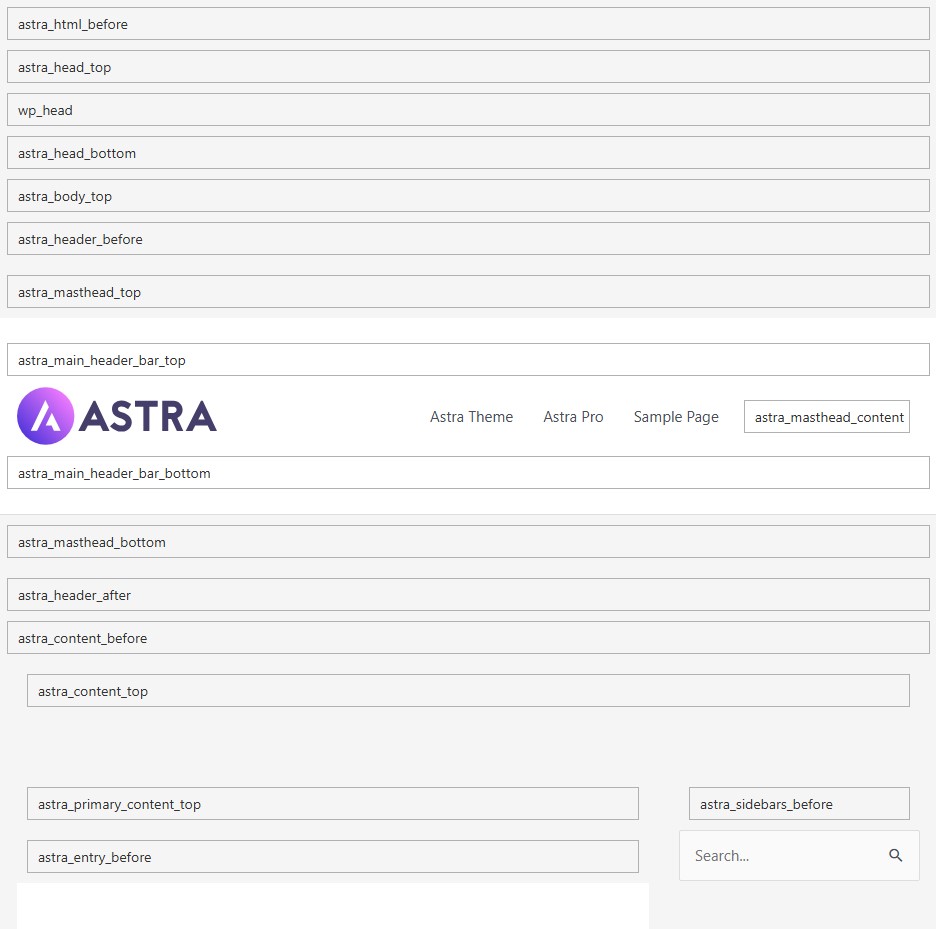
For example, a hook can be implemented in the functions.php file as follows:
add_action( 'astra_single_header_bottom','custom_function_name' );
function function_function_name () { ?>
// Insert your hook contents in here.
<?php }The list of hooks can be found at the address https://developers.wpastra.com/theme-visual-hooks/
Astra Pro also enhances Spacing Control beyond the free version. While the free version might offer horizontal content alignment, the Pro version gives you granular control over padding and margins in many areas of the customizer, like adding padding to buttons or content areas.
For those running online stores, the WooCommerce options in Astra Pro are significantly expanded compared to the free version. This could be a deciding factor for e-commerce sites. The free version offers basic shop and product page designs. Pro provides more shop archive designs (including a vertical design), more single product image gallery layouts (like a vertical slider), multiple product description layouts (accordion, distributed), the ability to display up-sells and recently viewed products in addition to related products, additional modern layouts for the cart and checkout pages, and checkout features like two-step checkout, distraction-free checkout, and persistent checkout form data (which saves data if the user refreshes the page). Upgrading to Pro makes a lot of sense if you’re running a WooCommerce store because of these extensive customization and conversion-focused features. It also offers a modern layout for the ‘My Account’ page and the option to enable user gravatars for a more professional look.
Finally, Astra Pro offers third-party integration enhancements. For example, it integrates well with Learning Management Systems (LMS) like LearnDash or LifterLMS, which is great if you’re building an e-learning platform.
User Experience
Using Astra, in my experience, is generally a very smooth process, especially when combined with a page builder and starter templates. The theme customizer is where you adjust many of Astra’s settings, covering global options, header and footer builders, blog settings, and more. Even the free version’s customizer is loaded with features.
However, it’s important to understand the relationship between the theme and page builders. The theme (Astra) sets the general structure, layout, and options like header/footer design, sidebar defaults, and archive page layouts. A page builder (like Elementor, Beaver Builder, or Spectra) is used to design the actual content of individual pages and posts using a visual, drag-and-drop interface. You need both a theme and a page builder. Sometimes, settings in the theme customizer (like container width) might be overridden by the page builder settings on a specific page, which is common and normal for WordPress.
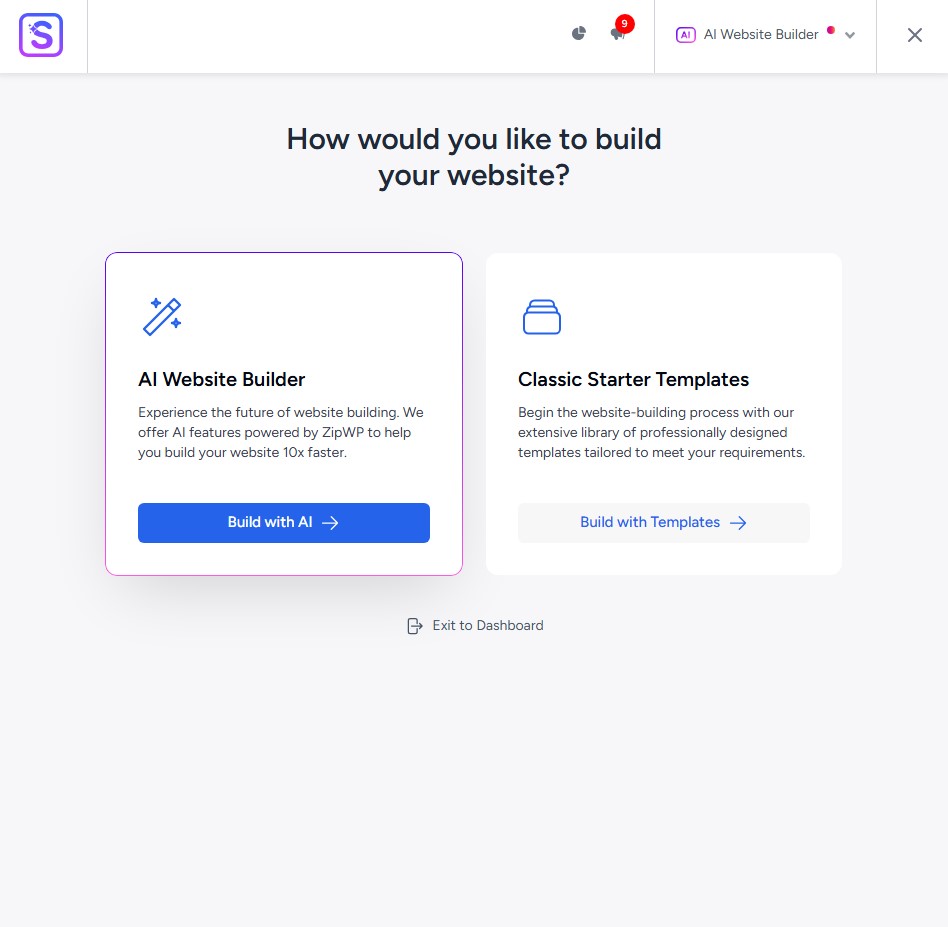
Getting started with Astra is often done by installing the Starter Templates plugin. This plugin provides a library of hundreds of pre-made website designs that you can import in just a few clicks. This is a massive time-saver. These templates work with popular page builders like Elementor, Beaver Builder, and Spectra. The library includes both free and premium designs. The premium designs, available with certain Astra Pro bundles, are described as highly crafted and conversion-focused. You can easily import a full website design or individual blocks/sections from these templates and then customize them with your content, images, and colors. You can even use a template designed for one industry and easily adapt it for another by changing the images and text.
The Premium option of the plugin is named Astra Premium Starter Templates Pro.
Working with Elementor is straightforward. You use Elementor to edit the page content, adding sections, columns, and elements like headings, text, and images using drag and drop. You can adjust spacing, colors, typography, and responsiveness directly within the Elementor editor. The process of adding pre-made sections (blocks) from the Astra library into an Elementor page is also seamless.
The default WordPress block editor (Gutenberg) is also mentioned. While useful for blog posts, building full website layouts with it can be more challenging compared to dedicated page builders like Elementor or Spectra, at least in my opinion.
Astra also has a new block theme called Spectra One. This is a completely different type of theme compared to classic themes like Astra. Block themes allow for full site editing directly within the WordPress editor, meaning you can potentially edit every part of your website (header, footer, templates) using blocks, without needing the theme customizer. Spectra One is noted as still being in its infancy and perhaps not ideal for beginners or critical production websites yet, but it represents the future direction of WordPress theme development.
The Brainstorm Force family also includes Spectra, which is a visual website builder plugin (not a theme like Spectra One). Spectra adds many blocks and layout options to the native WordPress block editor (Gutenberg), effectively turning it into a more powerful visual builder, similar to Elementor or Beaver Builder. Spectra Pro adds even more features like dynamic content, a loop builder, a pop-up builder, and premium templates/patterns. Spectra is designed to work very well with Astra and Spectra One.
ZipWP is another tool from Brainstorm Force that uses AI to help you create websites quickly. It can install Astra, Spectra, and generate an initial copy and images based on your input, essentially automating the initial setup and design phase that you might otherwise do manually with Astra and Starter Templates.
Overall, the user experience with Astra is generally smooth, especially when you leverage the power of starter templates and integrate it with a capable page builder. However, mastering some of the more advanced Pro features, like Custom Layouts and Hooks, requires a deeper dive into the options and display rules.
Support and Documentation
Time is money, especially if you’re building websites for clients or complex projects. Getting stuck on an issue can be incredibly frustrating and costly. This is where support becomes crucial.
By going Pro with Astra, you get access to 24/7, 5-star rated premium support. This support is delivered by passionate people whose goal is to make your website-building journey easier. Having dealt with bad support in the past, I can attest to the value of good, responsive help when you’re facing technical challenges.
In addition to direct support, Brainstorm Force provides documentation and video tutorials for their products, including Astra and its Pro features. For example, dedicated videos are mentioned for Page Headers, Custom Layouts, WooCommerce features (a “masterclass”), and detailed comparisons between Astra Free and Pro. These resources are valuable for learning how to use the theme and its features effectively. Links to documentation and comparison tables are also provided on the Astra website and within the Astra dashboard itself if you have the theme installed.
Pricing
The pricing structure for Astra Pro can seem a bit confusing at first because it’s part of a larger suite of products offered by Brainstorm Force. There isn’t just one “Astra Pro” price; it’s often bundled with other tools.
The basic paid version is Astra Pro. This gives you access to all the Pro features for the Astra theme itself. It’s available as a subscription, typically yearly, and allows usage on unlimited websites (if you consider 1000 to be unlimited), which is a great value if you manage multiple sites. It also includes 24/7 premium support.
Beyond Astra Pro, some bundles include Astra Pro along with other Brainstorm Force products:
- The Essential Toolkit Bundle: This includes Astra Pro, access to all the premium starter templates, and the much-anticipated Spectra Pro plugin. If you need the Pro theme features and also want access to the full library of professionally designed starter templates, this is the starting point.
- Business Toolkit (The Growth Bundle): This is the most comprehensive bundle, designed more for professionals, agencies, or freelancers. It includes everything in the Essential Bundle (Astra Pro, all premium starter templates) plus additional plugins, automated add-ons.
The pricing structure involves yearly subscriptions. For agencies or freelancers building websites for a living, the Growth Bundle is presented as a way to “cut down on production time” and speed up return on investment, especially with features like white labeling (available in the Growth Bundle). White labeling allows you to rebrand the Astra theme and related plugins with your own agency’s branding or your client’s branding, hiding the Astra/Brainstorm Force identity from the client’s WordPress dashboard. This adds a perceived value, making the delivered website feel more custom and professional to the client.
While the Pro features themselves can be beneficial for individual website owners needing more customization (scenario 2), the higher-tier bundles and features like white-labeling are targeted towards professionals building websites for clients (scenario 3), offering tools that can streamline workflows and enhance perceived value.
Use Cases
Based on the descriptions, Astra caters to a wide range of users and website types, depending on whether you use the free version, Astra Pro, or one of the bundles.
- Simple but Gorgeous Websites (Scenario 1): If your goal is to build a straightforward, professional-looking website without extensive custom features or e-commerce functionality, the free version of Astra is likely sufficient. It provides the necessary tools for building a good foundation, especially when combined with the free starter templates library. You can still create beautiful designs using the free options.
- Websites Needing More Customizations or Specific Features (Scenario 2): If you need more control over specific areas, such as enhanced blog layouts, advanced WooCommerce features, sticky headers, mega menus, or more granular design/typography options, then upgrading to Astra Pro is recommended. This scenario applies if you have a blog you want to make stand out, an e-commerce store needing conversion-focused features, an e-learning platform (benefiting from LMS integrations), or simply want the additional design flexibility provided by Pro features like site layouts and expanded color/typography controls. If you need these specific Pro features, it’s “a no-brainer” to get the Pro plan.
- Professionals, Agencies, and Freelancers (Scenario 3): If you build websites for clients for a living, the Essential Bundle or Growth Bundle is positioned as the ideal choice. The Essential Bundle includes Astra Pro and access to all the premium starter templates, which are highly crafted and conversion-focused, saving significant design time. The Growth Bundle adds even more value with additional premium plugins and features like white labeling. For professionals, cutting down on production time, having access to VIP support (implied with premium plans, specifically mentioned as 24/7 5-star for Pro), and being able to deliver a fully white-labeled product can significantly improve workflow efficiency and client satisfaction, speeding up the return on investment.
In essence, Astra scales with your needs, from basic personal sites to complex e-commerce platforms and agency workflows.
Alternatives
There are a few direct competitors in the WordPress theme space, specifically Blocksy, GeneratePress and Kadence. These are also popular themes, but they have taken a different strategic approach to the new WordPress block themes. While Astra’s team decided to build a brand new block theme called Spectra One, GeneratePress and Kadence have reportedly decided not to transform their existing classic themes into block themes. This is a “brave marketing strategy” by Astra’s team, acknowledging that time will tell if it’s the right move compared to their competitors. The market share statistics presented show Astra currently being significantly more popular in terms of active installations and daily downloads compared to GeneratePress, Kadence, and even Storefront (from Automatic, often used for WooCommerce).
It’s noted that the adoption of block themes has been slow so far, with even the most popular block themes having relatively low download numbers compared to classic themes. However, Astra entering the market with Spectra One could potentially drive block theme adoption due to the marketing power of Brainstorm Force.
Beyond direct classic theme competitors, Spectra One itself is presented as an alternative type of theme – a block theme. While Astra is a classic theme, Spectra One is built specifically for the full site editing experience using blocks. The choice between Astra (classic) and Spectra One (block) depends on your comfort level with the newer block editor and your project requirements. Astra (classic) is currently recommended for production websites, while Spectra One (block) is presented as promising but still in its infancy and perhaps better suited for experimental projects for now.
It’s also important to distinguish Astra from other tools in the Brainstorm Force family, which aren’t direct theme alternatives but rather complementary tools or different types of products:
- Spectra: This is a visual website builder plugin, not a theme. It enhances the core WordPress block editor with more blocks and design options.
- Starter Templates: This is a “plugin” that provides pre-made website designs to use with compatible themes and page builders (including Astra and Spectra). It’s not a theme itself but a library of templates.
- ZipWP: This tool leverages AI to automate the website creation process, often using Astra and Spectra under the hood. It’s a different approach to building a site, not a theme alternative.
So, while Astra has direct competitors in the classic theme space like GeneratePress and KadenceWP, its block theme (Spectra One) and other related tools offer different pathways and functionalities within the WordPress ecosystem.
Overall Impression
Having looked at all the features and different use cases, my overall impression is that Astra is an incredibly versatile and powerful WordPress theme. Its popularity is well-deserved, even based on the free version alone, which provides a solid foundation for building a professional website, especially when paired with the free starter templates.
However, the true power and flexibility, particularly for those building websites regularly or running sites with specific needs like e-commerce or extensive content, lies in Astra Pro and the higher-tier bundles. The Pro features, from the advanced header/footer options, sticky headers, and mega menus to the comprehensive WooCommerce enhancements and the revolutionary Custom Layouts module (acting as a theme builder), offer a level of control and functionality that goes far beyond the basics.
I think the decision to upgrade to Pro or choose a bundle depends entirely on your specific requirements.
- For a simple website, stick with the free version. It’s more than capable.
- If you need more customization, especially for blogs or e-commerce, or require specific features like sticky headers or mega menus, Astra Pro is a worthwhile investment. The expanded color, typography, and spacing controls are also significant for fine-tuning design.
- If you are a professional builder, freelancer, or agency, the value of the bundles, including premium templates, additional plugins, and white-labeling, seems undeniable for improving efficiency and client deliverables.
The development of Spectra One as a block theme indicates that the Astra team is also looking towards the future of WordPress, although Astra “Classic” remains the stable and recommended option for most production sites right now.
The support offered with the Pro version is a significant benefit, especially for those who value their time and need reliable help when issues arise. The abundance of documentation and video tutorials also helps users get the most out of the theme.
While some Pro features like certain container layouts might feel less relevant if you primarily use a page builder that overrides them, features like Custom Layouts for building unique headers, footers, and template parts for specific pages or archives are incredibly powerful and justify the upgrade for many use cases. The depth of the WooCommerce options in Pro is also a major selling point for online stores.
In conclusion, I believe Astra lives up to its reputation. The free version is excellent, and Astra Pro, particularly when considered within the context of the bundles and the target user (from individual customizers to agencies), offers a robust set of features that can significantly enhance your website-building capabilities and efficiency. It’s a theme that grows with your needs, offering distinct value propositions at each level.
